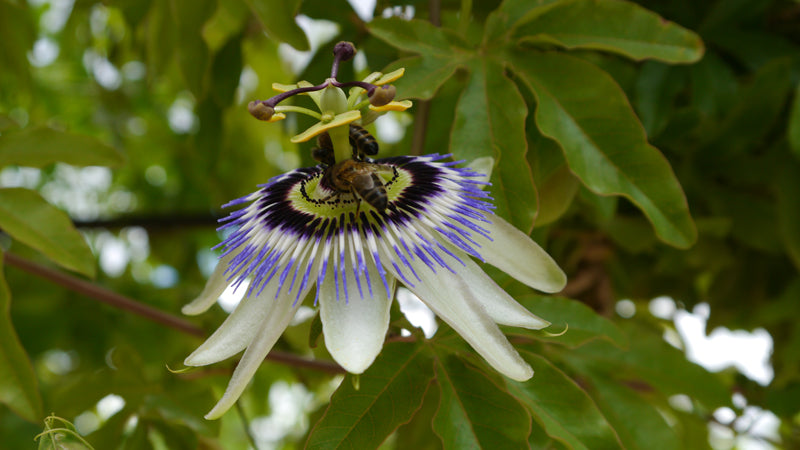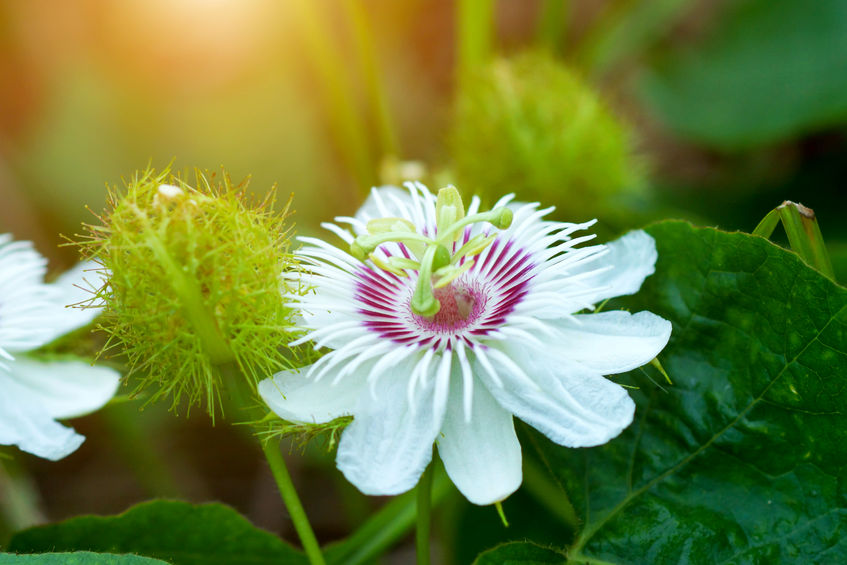Passionflower (Passiflora caerula)
Passion flowers are Mediterranean climbing plants from the tropics that are also conquering German gardens and terraces. They belong to the passionflower family, which includes more than 500 species. They are very robust and resilient.

Flowering time:
With good care, passion flowers bloom from June to September.
Leaf and flower:
Their strikingly large flowers are a unique feast for the eyes and have a diameter of about 7 to 9 cm. They come in a wide variety of shapes and colors. The most well-known has five whitish petals and sepals surrounded by a wreath of delicate, colorful threads. From their center protrude five golden anthers and three brown stigmas. Passion flowers require a trellis, but they will conquer anything they can grasp. A flower only opens for about 24 hours, but with proper care, new blooms will continually appear.
Wintering:
The plants are best grown in a cap, as they are only frost-resistant down to about -10 degrees Celsius and should be placed in a bright, warm place between 0 and 10 degrees Celsius during the winter. To ensure a good winter dormancy, they are pruned before being moved into the new place. Watering and fertilizing should be very sparing in winter.
Location requirements:
Passion flowers prefer sunny, warm, and well-protected areas. They thrive in front of walls that can retain the sun's heat and release it to the plants even at night.
Care:
Passion flowers are quite undemanding and rewarding. They should be watered regularly, ensuring the soil is always moist during the growing season, but not waterlogged. Otherwise, the roots could be damaged. To grow well, the plants need large containers with loose, nutrient-rich potting soil. The plant also needs to be regularly fertilized until late summer. If it thrives, it will produce abundant flowers.

Origin of the name:
The name Passiflora contains the Latin words "passio" for suffering and "flos" for flower, meaning "flower of suffering." This, as well as the German name, is said to symbolize the suffering of Christ. Hence, it is also called "Passion of Christ" or "Golgotha flower." The flower's structure is also highly symbolic and is meant to represent the suffering of Christ: The aureole represents the crown of thorns, the three stigmas (also called styles) represent the nails of the crucifixion, and the five anthers represent the five wounds of Christ.
Tip:
On June 19th and 20th, from 10am to 6pm, the Passion Flower Days will take place again at the “Gärtnerei Albert Herbrechter” in Witten – Stockum.
TEXT Victoria Wegner









































































































